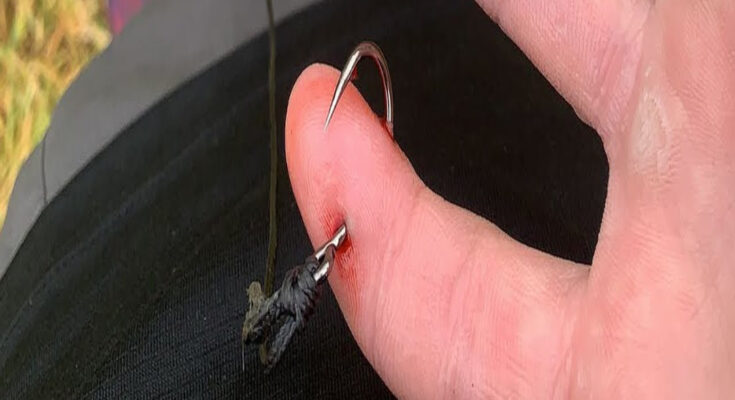If you or someone else has a fishing hook embedded in a finger, it’s important to handle the situation carefully to minimize pain and reduce the risk of infection. Here are steps to safely remove a fishing hook from a finger:
1. **Assess the Hook:** Determine the depth and location of the hook in the finger. If the barb is embedded, the removal process will need extra care to avoid causing further injury.
2. **Control Bleeding (if any):** If the hook has caused bleeding, apply gentle pressure with a clean cloth or gauze to stop the bleeding. Elevate the hand to reduce blood flow to the affected area.
3. **Evaluate Movement:** Assess whether the hook can be removed safely. If the barb is not embedded, gently back the hook out along the entry path. If the barb is embedded, you may need to cut the line and address the barb separately.
4. **Prepare for Removal:**
– **Sanitize Hands:** Wash your hands thoroughly with soap and water, or use hand sanitizer if soap and water are not available.
– **Gather Supplies:** Prepare a pair of needle-nose pliers, wire cutters (if needed), and antiseptic wipes or solution.
5. **Remove the Hook:**
– **Back the Hook Out:** If the barb is not embedded, use steady and gentle pressure to back the hook out along the entry path.
– **Cut the Barbed End (if embedded):** If the barb is embedded, use wire cutters to cut off the barbed end of the hook. After cutting, carefully back the remaining hook out through the entry path.
6. **Clean the Wound:** After removing the hook, clean the wound thoroughly with soap and water. Use antiseptic wipes or solution to disinfect the area around the wound.
7. **Apply Bandage:** Once the wound is cleaned, apply a sterile adhesive bandage or gauze pad to cover the wound and protect it from further contamination.
8. **Seek Medical Attention:** After initial first aid, consider seeking medical attention, especially if the wound is deep, bleeding heavily, or if there are concerns about infection. Tetanus vaccination status should also be considered.
**Important Notes:**
– **Do not force the hook:** If you encounter resistance or significant pain during the removal process, stop and seek medical help.
– **Prevention of infection:** Keep the wound clean and monitor for signs of infection such as increased pain, redness, swelling, warmth, or discharge.
If you are unsure or uncomfortable with removing the hook yourself, seek immediate medical assistance. Always prioritize safety and proper wound care to minimize complications.



